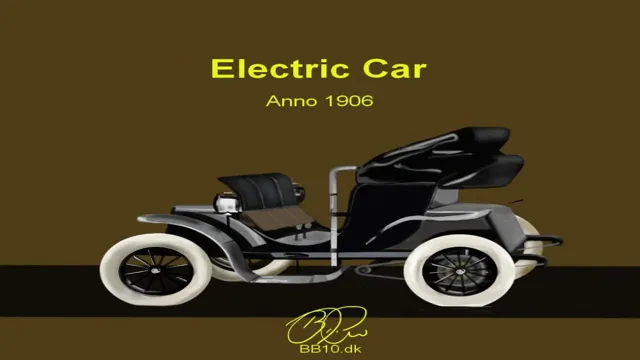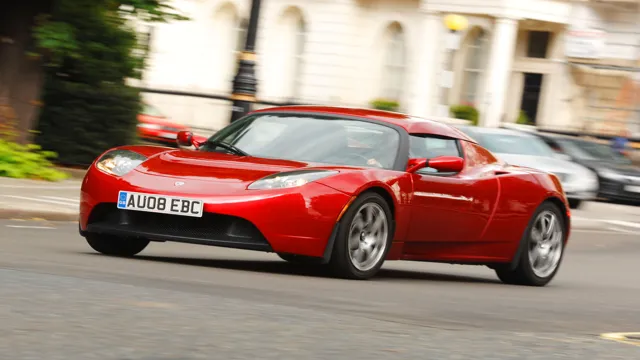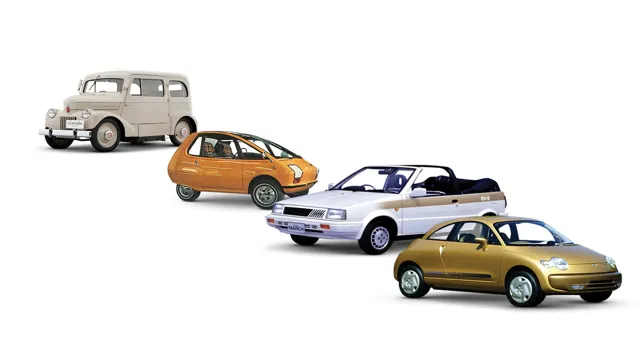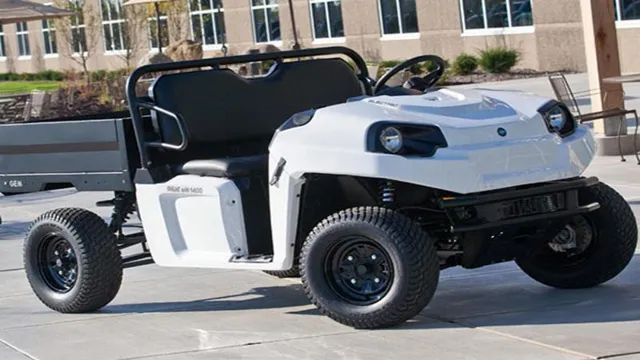The Electrifying Evolution: A Comprehensive Guide to the History of Electric and Hybrid Cars
Electric and hybrid cars are no longer a distant futuristic concept. They are becoming increasingly popular and accessible to the masses. It’s no secret that the transportation industry plays a significant role in the deterioration of the environment.
Over the years, advancements in technology have allowed the evolution of electric and hybrid cars that are slowly transforming the way we move. With climate change becoming more pressing and energy efficiency being at the forefront of people’s minds, electric and hybrid cars seem to be the ideal solution. In this article, we will delve into the history, present state, and future of the evolution of electric and hybrid cars, and how they are changing the world of transportation.
Early Innovations
Electric and hybrid cars are not a new invention; in fact, they have been around for over a century! The first electric car was developed in the late 1800s, and by the early 1900s, electric vehicles were quite common on city streets. The Baker Electric was a popular brand, with a range of around 80 miles on a single charge. However, the invention of the gasoline engine led to a decline in electric cars, as gasoline cars were cheaper and had a longer range.
It wasn’t until the 1970s oil crisis that electric cars saw a resurgence in popularity. Hybrid cars, which use both gasoline and electric power sources, were also invented around this time. The Toyota Prius was the first mass-produced hybrid car and was introduced in Japan in 199
Since then, electric and hybrid cars have continued to evolve, with longer ranges and more advanced technology. Today, they are seen as a viable alternative to gasoline-powered cars, helping to reduce air pollution and decrease our dependence on fossil fuels.
Emergence of Electric Cars
Electric Cars, Early Innovations Electric cars have been around for longer than you might think, with early innovations dating back to the 1800s. In fact, the first electric car was developed in 1837 by Scottish inventor Robert Davidson. However, it wasn’t until the late 1800s and early 1900s that electric cars gained popularity, particularly among the wealthy who appreciated the cars’ easy handling and lack of vibrations.
One of the most notable early electric car models was the Baker Electric, which was produced from 1899 to 1914 and was known for its quiet operation and reliability. Despite their benefits, electric cars began to lose favor as gasoline-powered cars became more affordable and widespread in the early 1900s. However, with the growing concern about climate change and the rise of renewable energy sources, electric cars have begun to make a comeback in recent years.
Today, major car manufacturers are investing heavily in electric car technology, and governments around the world are offering incentives to encourage people to switch to electric cars.

Hybrid Cars Enter the Scene
Hybrid cars have become a popular and practical choice for environmentally conscious individuals who seek to reduce their carbon footprint while still having the convenience of a car. However, the concept of a hybrid car is not a recent innovation. In fact, the first hybrid car was developed in 1899 by Ferdinand Porsche.
The Lohner-Porsche Mixte Hybrid was powered by a gasoline engine and an electric motor. However, it was not until the late 1990s that mass-produced hybrid cars made their debut. Toyota introduced the Prius in 1997, which quickly became the world’s best-selling hybrid car.
Since then, other car manufacturers such as Honda, Ford, and General Motors have also ventured into producing hybrid cars. Early hybrid cars were not as advanced as they are now, but they paved the way for eco-friendly transportation and sparked the need for further innovation in this field.
Government Incentives and Regulations
The history of electric and hybrid cars has been one of ups and downs, marked by moments of swift progress and frustrating setbacks. One significant factor that has helped propel the growth of these vehicles over the years has been the government’s incentives and regulations. In many countries, governments have offered tax credits or rebates to those who purchase electric or hybrid vehicles, making them more affordable for people who might be on the fence about going green.
Other countries have implemented strict emissions regulations, pushing automakers to develop cleaner cars and invest in new technology. Of course, there have also been times when governments have been slow to act, or even actively opposed the growth of electric and hybrid cars. Still, the overall trend has been in favor of these vehicles, and it’s no surprise that many people today see them as a key part of the future of transportation.
Rise of Subsidies and Tax Credits
In recent years, there has been a significant rise in government incentives and regulations, especially in the renewable energy sector. Subsidies and tax credits have become a crucial tool for policymakers to encourage investment and adoption of clean energy technologies. These incentives are designed to offset the high initial capital cost of renewable energy projects and level the playing field against traditional fossil fuels.
For example, the federal Investment Tax Credit (ITC) provides a 26% tax credit for solar energy systems installed in residential or commercial properties. Similarly, various state-level programs help incentivize the development of wind, geothermal, and other clean energy projects. These incentives not only benefit the environment, but they also create jobs and spur economic growth.
The renewable energy industry has seen phenomenal growth in recent years thanks, in large part, to government policies promoting clean energy adoption. As a result, more individuals and businesses are turning to renewable energy sources, driving down costs and accelerating the transition towards a cleaner, more sustainable future.
Emission Standards and Fuel Efficiency Regulations
As nations around the world continue to prioritize environmental protection, governments have employed various measures to curb the emission of pollutants and increase energy efficiency. Emission standards and fuel efficiency regulations have become a key aspect of these measures. Governments impose these regulations to limit the amount of pollutants that vehicles release into the environment while also encouraging the development of fuel-efficient vehicles.
The regulations put automakers under immense pressure to reduce their carbon footprint, leading to more eco-friendly and sustainable vehicle models. Government incentives can also encourage consumers to purchase energy-efficient vehicles by offering tax credits, rebates, and other benefits. By implementing these regulations and incentives, governments aim to reduce carbon emissions, improve air quality, and safeguard the environment.
The continuous refinement of these measures is essential in ensuring a greener future for the planet.
The Future of Electric and Hybrid Cars
The history of electric and hybrid cars is a fascinating one. Electric cars were actually some of the first vehicles on the road, and were quite popular in the early 1900s. However, they fell out of favor as gasoline-powered cars became more affordable and readily available.
It wasn’t until the 1990s that electric cars began making a comeback, and hybrid cars were introduced as a way to bridge the gap. Today, electric and hybrid vehicles are becoming increasingly popular as more people look for ways to reduce their carbon footprint and lessen their dependence on fossil fuels. The future of these vehicles looks bright, as technological advancements are making them more efficient and affordable.
While there are still some concerns about range anxiety and charging infrastructure, these issues are being addressed through the development of more powerful batteries and the expansion of charging networks. As electric and hybrid cars continue to improve and gain popularity, it’s likely that they will replace traditional gas-powered cars as the norm in the coming years.
Advancements in Battery Technology
Electric and Hybrid Cars As we become more conscious of our carbon footprint, the future of transportation is looking increasingly electric. One of the main concerns surrounding electric and hybrid vehicles is the range of their batteries. However, recent advancements in battery technology are set to change this.
Scientists are working on lithium-ion batteries that possess a higher energy density, meaning they can store more energy in a smaller space. This will provide electric cars with longer ranges, reducing the need for frequent charging. Beyond that, solid-state batteries may be the future of electric vehicles.
They’re safer, cheaper, and more efficient than current lithium-ion batteries. Furthermore, manufacturers are working on developing wireless charging, making charging even more convenient for drivers. With these advancements, the popularity of electric and hybrid cars will likely only continue to grow, paving the way for a greener, more sustainable future.
Increased Range and Quicker Charging Times
As the world shifts towards sustainability, the future of electric and hybrid cars is looking brighter than ever. With advanced technology and engineering, increased range and quicker charging times are becoming a reality for drivers. Long gone are the days of having to plan out every pit stop on a long road trip, or waiting for hours on end for a battery to recharge.
Now, electric and hybrid cars come equipped with larger batteries and sophisticated charging systems that make road trips more feasible and practical. Not only is this good news for drivers, but it’s also great news for the environment. By reducing emissions and energy consumption, electric and hybrid cars are playing a vital role in combating climate change and promoting sustainability.
The future is electric, and with every advancement in technology, it’s clear that we’re headed towards a cleaner and brighter future for all.
Conclusion
Electric and hybrid cars have come a long way from being dismissed as mere novelties to becoming viable and sustainable alternatives to gas-guzzling vehicles. From the first crude electric cars of the 1800s to the sleek and eco-friendly modern hybrids, the history of electric and hybrid cars is a testament to the power of innovation and the commitment to a greener future. As we drive towards a sustainable and low-emission future, let us remember the pioneers and innovators who paved the way for the electric and hybrid vehicles we know today, and continue to support the development of cleaner and more efficient transportation options.
After all, it’s not just about the destination, but also about the journey towards a more sustainable and smarter future.”
FAQs
When was the first electric car invented?
The first electric car was invented in 1837 by Robert Anderson.
When was the first hybrid car developed?
The first hybrid car was developed in 1898 by Ferdinand Porsche.
What was the first commercially available electric car?
The first commercially available electric car was the Detroit Electric in 1907.
What impact did the oil crisis of the 1970s have on electric and hybrid cars?
The oil crisis of the 1970s led to an increased interest in electric and hybrid cars as a way to reduce dependence on oil.
What notable advancements have been made in electric and hybrid car technology in recent years?
Notable advancements in recent years include the development of longer-lasting batteries, improved charging infrastructure, and increased range for electric cars.







